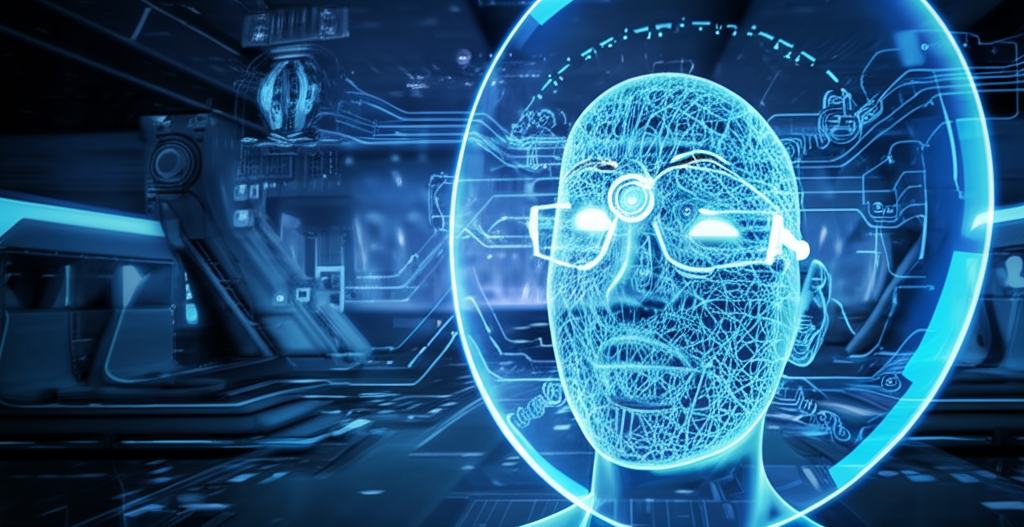 illustration from Gemini
illustration from Gemini
The Metaverse Explained: Your Guide to the Next Digital Frontier
You've heard the buzzword: metaverse. It's captivating tech enthusiasts, gamers, and businesses, promising a new era of digital interaction. But what lies beyond the hype? Is it just advanced VR, or something revolutionary? Let's dive deep, demystifying the metaverse and exploring its technology, potential, challenges, and future impact.
What Exactly is the Metaverse?
Imagine the internet evolving from flat screens into immersive, interconnected 3D virtual worlds. That's the core concept of the metaverse. It's a persistent, shared digital space accessed online, merging virtual reality (VR), augmented reality (AR), and mixed reality (MR) with social media, gaming, digital economies, and more.
Key traits define the metaverse:
- Persistence: It exists and evolves continuously, whether you're logged in or not.
- Real-Time Interaction: Engage with others and the environment instantly.
- Functioning Economy: Create, buy, sell, and own digital assets, often using cryptocurrencies.
- Social Presence: Experience a genuine sense of being present and connected with others.
- Interoperability (The Goal): Ideally, move seamlessly between different virtual worlds with your avatar and assets.
It's crucial to understand the metaverse isn't a single entity yet. It's a growing ecosystem of platforms (like those from Meta, Microsoft, Epic Games) aiming for greater interconnection.
Core Technologies Driving the Metaverse
Building these virtual frontiers requires a blend of cutting-edge technologies:
- Virtual Reality (VR): Headsets creating fully immersive digital environments.
- Augmented Reality (AR): Overlays digital information onto your view of the real world (via phones or glasses).
- Mixed Reality (MR): Blends VR and AR, allowing digital objects to interact realistically with the physical world.
- Blockchain & Crypto: Enables secure ownership of digital assets and powers virtual economies.
- 3D Engines & Modeling: Tools for creating realistic, interactive virtual spaces and objects.
- Artificial Intelligence (AI): Powers realistic non-player characters (NPCs), personalizes experiences, and aids moderation.
- 5G & Edge Computing: Provides the high-speed, low-latency connectivity essential for smooth experiences.
Potential Metaverse Applications Across Industries
The possibilities are far-reaching:
- Gaming & Entertainment: Deeper immersion, social gameplay, virtual concerts, and events.
- Social Connection: Hang out with friends, attend virtual gatherings, and join communities in novel ways.
- Education & Training: Interactive learning, virtual field trips, complex simulations (e.g., surgical training).
- Work & Collaboration: Virtual offices, remote team collaboration, immersive meetings, and product design.
- E-commerce & Retail: Virtual storefronts, try-before-you-buy experiences, and unique customer engagement.
- Healthcare: Remote therapy sessions, patient monitoring, and surgical planning.
- Real Estate: Virtual property tours, development, and investment in digital land.
- Manufacturing: Collaborative design, process simulation, and remote worker training.
Navigating the Challenges and Concerns
Despite its promise, the metaverse faces significant hurdles:
- Accessibility & Cost: High hardware costs (e.g., VR headsets) limit access.
- Digital Divide: Risk of excluding those without adequate technology or internet access.
- Privacy & Security: Protecting vast amounts of personal data in immersive environments is critical.
- Content Moderation: Preventing harassment, misinformation, and harmful behavior in vast virtual spaces.
- Health & Well-being: Issues like motion sickness, eye strain, addiction, and mental health impacts need addressing.
- Regulation & Ethics: Lack of clear rules for virtual property, identity, and conduct.
- Environmental Impact: Energy consumption of underlying technologies (especially blockchain) is a concern.
- Interoperability: Creating seamless connections between different platforms remains a major technical challenge.
The Future Vision: An Interconnected Reality
The metaverse journey is just beginning. As technology matures, expect:
- Hyper-Realistic Avatars: AI-driven avatars mirroring real-world expressions and nuances.
- Advanced Haptics: Technology allowing you to 'feel' virtual objects and interactions.
- Brain-Computer Interfaces (BCIs): Potential future tech for controlling experiences with thought.
- Physical-Digital Blurring: Seamless integration between virtual elements and the real world via AR/MR.
- Decentralization: Blockchain empowering users with more control over their digital identity and assets.
Conclusion: Building a Responsible Digital Future
The metaverse signifies a potential evolution in human-computer interaction. Its capacity to reshape industries and social life is immense. However, realizing this potential responsibly requires tackling the challenges head-on – prioritizing accessibility, security, safety, and ethical development. By fostering an inclusive and well-governed approach, we can guide the metaverse towards becoming a truly enriching extension of our world.
Curious to explore? Research different metaverse platforms, try out VR/AR experiences, and stay engaged with the ongoing conversation about its development.
What excites or concerns you most about the metaverse? Share your thoughts!
Published on April 25, 2025
reference: Various Article on internet
Gema
Wordsmith and content writer passionate about creating high-quality content that informs, entertains, and inspires. Let me bring your brand's story to life.
All stories by : Gema

0 Comments